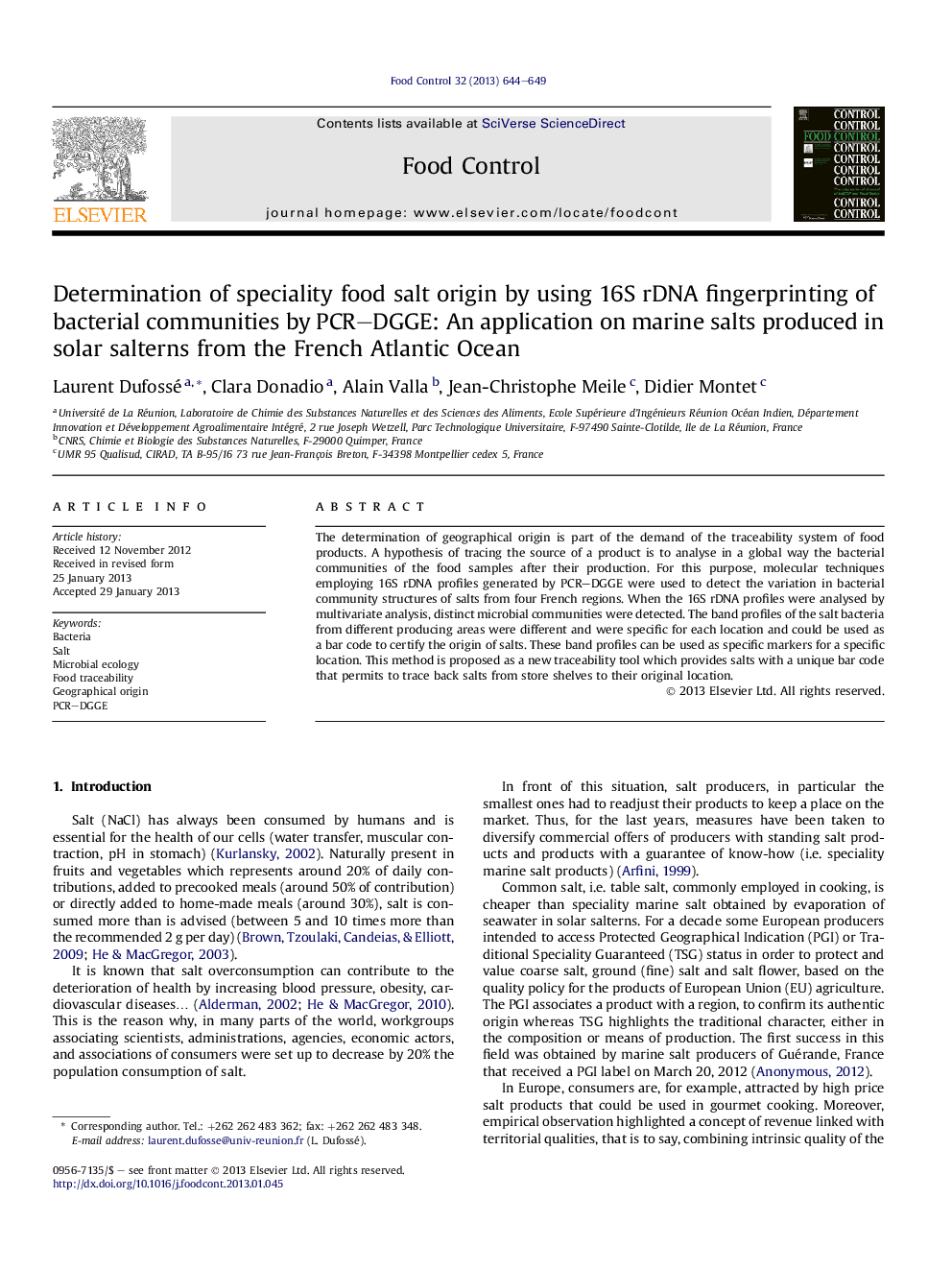| Article ID | Journal | Published Year | Pages | File Type |
|---|---|---|---|---|
| 4559417 | Food Control | 2013 | 6 Pages |
The determination of geographical origin is part of the demand of the traceability system of food products. A hypothesis of tracing the source of a product is to analyse in a global way the bacterial communities of the food samples after their production. For this purpose, molecular techniques employing 16S rDNA profiles generated by PCR–DGGE were used to detect the variation in bacterial community structures of salts from four French regions. When the 16S rDNA profiles were analysed by multivariate analysis, distinct microbial communities were detected. The band profiles of the salt bacteria from different producing areas were different and were specific for each location and could be used as a bar code to certify the origin of salts. These band profiles can be used as specific markers for a specific location. This method is proposed as a new traceability tool which provides salts with a unique bar code that permits to trace back salts from store shelves to their original location.
► Bacterial 16S rDNA profiles of marine salts generated by PCR–DGGE. ► Profiles of the salt bacteria from producing areas are specific for each location. ► A new traceability tool which provides salts with a unique bar code. ► This method permits to trace back salts from store shelves to their original location.
